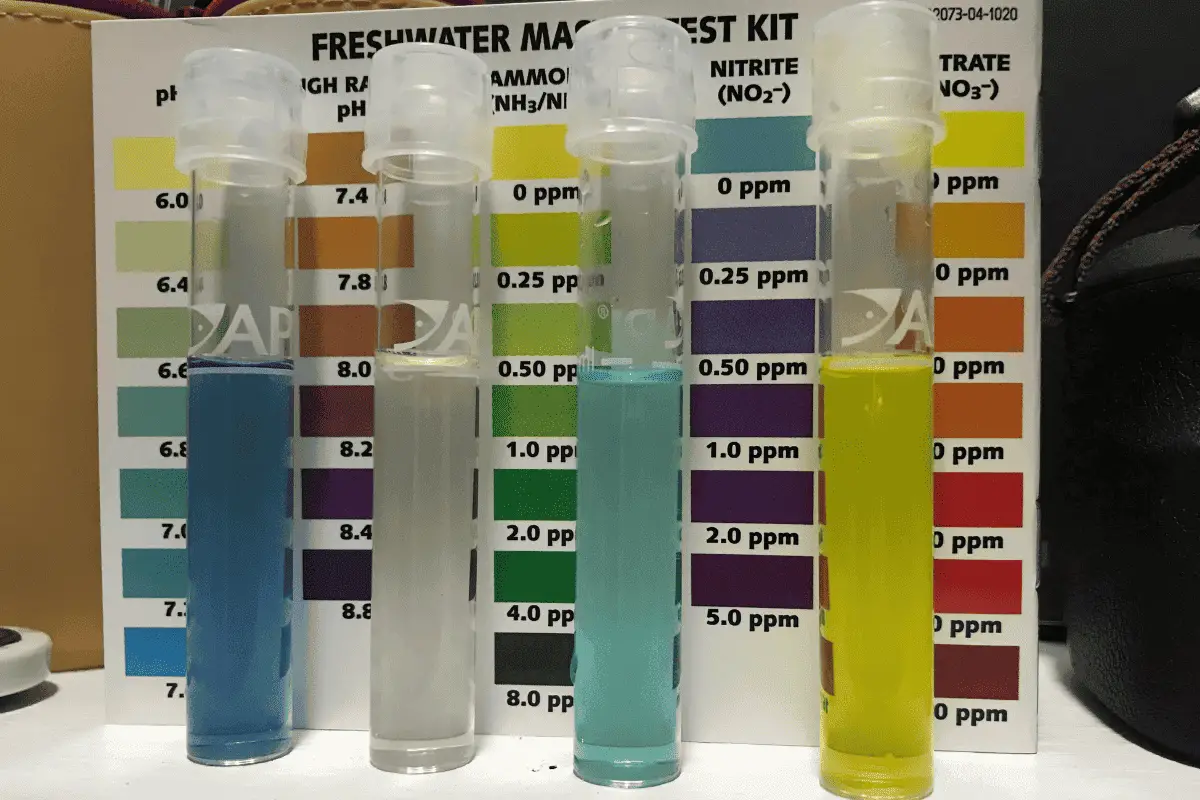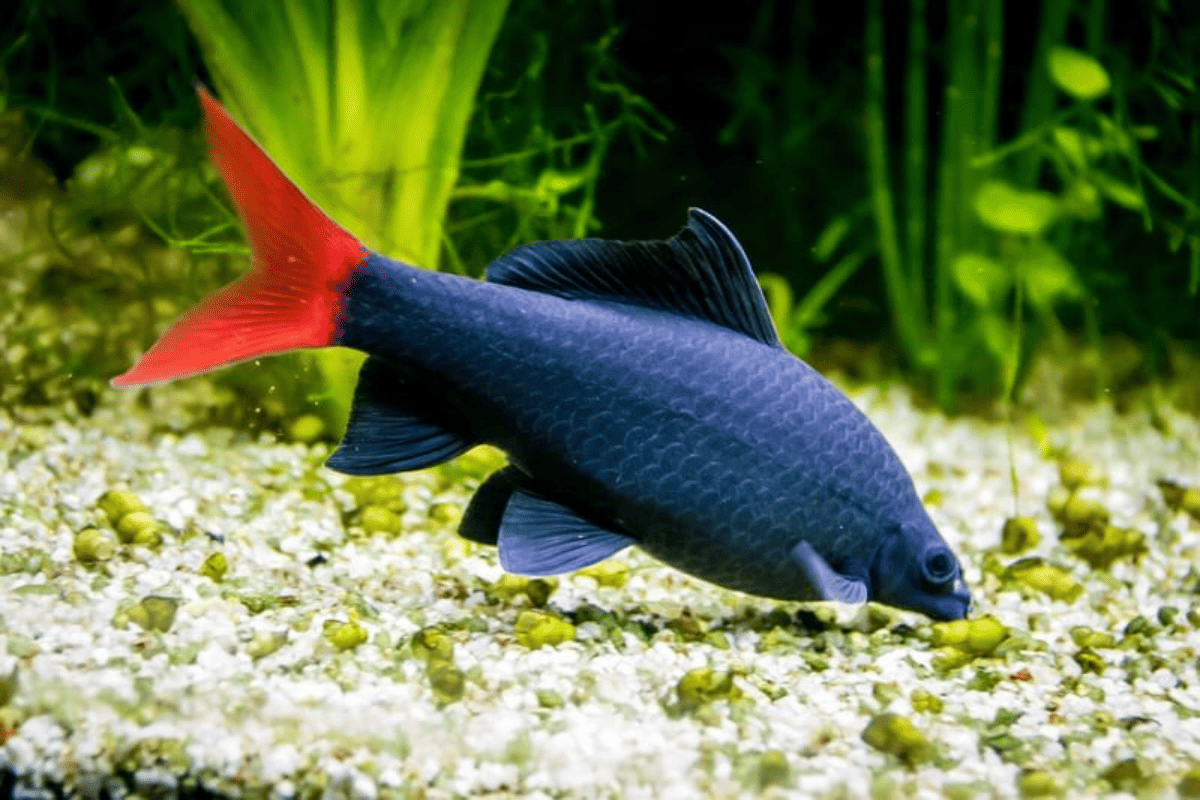Angelfish are among the most popular freshwater aquarium fish, primarily because of their striking beauty and amiable nature.
If you’re setting up a 30-gallon tank and are curious about how many angelfish you can introduce to it, you’ve landed on the right page.
In this article, I will delve into the ideal number of angelfish for that tank size and recommend other fish species that can coexist harmoniously with them.
Let’s get started.

How Many Angelfish Can I House In A 30-Gallon Tank?
In a 30-gallon tank, you can comfortably house 2 to 3 angelfish. However, this can vary based on factors like their size and the tank’s setup.
- Tank Size per Fish: Angelfish require about 10 gallons of space per adult. So, in a 30-gallon tank, housing more than 3 can lead to crowding.
- Growth Considerations: Angelfish can grow up to 6 inches in length. As they mature, they’ll need more space to move and live comfortably.
- Tank Setup: The presence of plants, decorations, and other fish can reduce the effective swimming space. Always account for these when deciding the number of angelfish.
- Social Behavior: Angelfish can be territorial. Overcrowding can lead to aggression and stress, which is detrimental to their health and well-being.
Here’s how I calculated this:
- The 1-inch-per-gallon rule suggests 1 inch of fish per gallon of water.
- Angelfish can grow up to 6 inches in length when mature.
- Using the rule: 6 inches x 3 angelfish = 18 inches.
- This leaves 12 gallons (or 12 inches following the rule) for adjustments, considering their territorial nature and the tank setup.
- Thus, 2 to 3 angelfish would be ideal for a 30-gallon tank, taking their full growth into account.
Also Read: Angelfish Tank Size

Why Do Many Consider A 30-Gallon Aquarium Perfect For Angelfish?
A 30-gallon aquarium is often considered ideal for angelfish because it provides ample space for their growth and allows for a comfortable environment.
The size strikes a balance between managing water quality and offering a suitable habitat for these majestic fish.
- Space for Growth: Angelfish can grow up to 6 inches in length. A 30-gallon tank ensures they have sufficient room to move and grow without constraints.
- Water Stability: Larger water volumes, like in a 30-gallon tank, help in maintaining stable water parameters. This is crucial for angelfish which are sensitive to rapid changes in water conditions.
- Decor and Planting: A 30-gallon aquarium offers enough space for plants and decorations, mimicking the angelfish’s natural habitat and offering hiding spots, reducing stress.
Also Read: Can You Keep Angelfish In A 20-Gallon Tank?
Tips For Maintaining A 30-Gallon Aquarium With Angelfish
Maintaining a 30-gallon aquarium with angelfish requires careful monitoring and consistent care for a thriving aquatic environment.
Adopting specific practices ensures the well-being of your angelfish and the longevity of your setup.
- Regular Water Changes: Replace 20-25% of the tank water bi-weekly, using a siphon to remove detritus and waste at the substrate level.
- Water Parameters: Maintain a temperature of 76-82°F with heaters and ensure pH levels between 6.5-7.5, mimicking the Angelfish’s Amazonian habitat. The API Freshwater Master Test Kit (link to Amazon) is a reliable choice for testing.
- Dietary Needs: Offer a mix of quality flakes, pellets, and bi-weekly treats of live or frozen foods like bloodworms to ensure varied nutrition.
- Tank Setup: Incorporate tall plants (like Amazon Swords) and vertical decorations to accommodate the angelfish’s tall and elegant body structure.
- Filtration System: Invest in a quality filter with a flow rate of 4-5 times the tank’s volume per hour, ensuring clean, well-circulated water. I personally picked the well-known Fluval C4 Power Filter (link to Amazon).
- Avoid Overstocking: Apart from 2-3 angelfish, add a limited number of compatible tankmates, like tetras, to avoid territorial disputes.
- Disease Prevention: Quarantine new fish for 2-3 weeks and regularly inspect for signs like spots or erratic swimming, ensuring early detection of illnesses.

What If I Add More Angelfish To My 30-Gallon Aquarium?
Adding more angelfish to a 30-gallon aquarium can lead to overcrowding and stress among the fish.
While the tank might seem spacious initially, as they mature and grow, the limited space can cause multiple issues.
- Increased Aggression: Angelfish are territorial; more fish means limited personal space, leading to fights and potential injuries among them.
- Water Quality Degradation: More fish produce more waste, leading to rapid ammonia build-up, which requires more frequent water changes to mitigate.
- Stunted Growth: Overcrowded conditions can lead to stunted growth, as fish compete for food and space, not reaching their potential size.
- Disease Proliferation: In tight spaces, illnesses spread faster. One sick angelfish in an overcrowded tank can quickly infect the entire population.
Also Read: How Many Angelfish In A 40-Gallon Tank?
Does The Gender Of Angelfish Make A Difference?
Yes, the gender of angelfish does make a difference, especially in a limited space like a 30-gallon tank.
Gender considerations can influence territorial behaviors, breeding, and overall tank harmony.
- Territorial Males: Male angelfish tend to be more territorial than females. In a 30-gallon setup, multiple males might exhibit increased aggression due to limited space.
- Breeding Pairs: If you have a male and female pair, they might form a breeding bond. This can lead to the pair becoming territorial, especially during spawning periods.
- Male-to-Female Ratio: It’s generally recommended to keep a 1:2 male-to-female ratio. This minimizes aggression by dispersing the male’s attention between multiple females.
- Tank Harmony: Understanding gender dynamics helps in arranging tank decor. For instance, multiple hiding spots can be beneficial when males chase females during courtship.

Is It Feasible To Breed Angelfish In A 30-Gallon Environment?
Yes, it is feasible to breed angelfish in a 30-gallon environment, though it presents challenges.
With meticulous care and proper setup, a 30-gallon tank can serve as a suitable breeding ground.
- Pairing Strategy: Ensure you have a confirmed pair; they often choose their mates. Once paired, they tend to be monogamous and will spawn together.
- Optimal Conditions: Maintain water temperature between 78-80°F and pH around 6.5-7. This mimics their natural breeding environment and triggers spawning.
- Provide Vertical Surfaces: Angelfish prefer to lay eggs on vertical surfaces. Offer slate, broad leaves, or vertical decorations for this purpose. My recommendation: AQUA KT Angelfish Spawning Slates (link to Amazon).
- Protect the Fry: Once eggs hatch, consider moving fry to a separate tank or provide adequate protection from potential predators, including their parents.
Typical Group Sizes For Housing Angelfish Together
Angelfish are best housed in either solitary pairs or larger groups to diffuse territorial aggression.
The ideal group size and tank size depend largely on the maturity and growth stage of the angelfish.
- Solitary Pairs: For breeding or close monitoring, a pair of angelfish can thrive in a 20-30 gallon tank, ensuring they have ample space to establish territory.
- Moderate Groups: A group of 5-6 juvenile angelfish can start in a 55-gallon tank. As they grow, consider relocating or upgrading to prevent overcrowding.
- Larger Groups: For groups of 6 or more mature angelfish, a tank of 100 gallons or more is recommended, providing each fish with ample space to move and establish territory.

Coexisting Angelfish With Other Fish In A 30-Gallon Aquarium
Angelfish can coexist with other fish species in a 30-gallon aquarium, but choosing compatible tankmates and managing numbers are vital.
Ensuring harmony requires selecting non-aggressive, similarly-sized, or smaller species that won’t provoke or be threatened by the angelfish.
Here’s a simple table summarizing everything I am about to say:
| Fish Combination | Number of Fish (30-Gallon Tank) |
| Angelfish + Corydoras Catfish | 2 Angelfish, 4-6 Corydoras |
| Angelfish + Rummy-Nose Tetras | 2 Angelfish, 6-8 Rummy-Nose Tetras |
| Angelfish + Dwarf Gouramis | 2 Angelfish, 2-3 Dwarf Gouramis |
| Angelfish + Hatchetfish | 2 Angelfish, 5-7 Hatchetfish |
| Angelfish + Plecostomus | 2 Angelfish, 1 Plecostomus |
| Angelfish + Black Neon Tetras | 2 Angelfish, 6-8 Black Neon Tetras |
| Angelfish + Kuhli Loaches | 2 Angelfish, 3-4 Kuhli Loaches |
- Corydoras Catfish: 4-6 of these peaceful bottom-dwellers can be housed with angelfish. They scavenge for leftovers and keep the substrate clean.
- Rummy-Nose Tetras: A school of 6-8 can be added. Their schooling nature and distinct coloration add dynamic movement without posing a threat.
- Dwarf Gouramis: 2-3 of these colorful, tranquil fish can coexist with angelfish, adding vibrancy to the middle water layers.
- Hatchetfish: A group of 5-7 is suitable. Their unique shape and top-dwelling habit complement the angelfish’s middle-layer domain.
- Plecostomus: One of these algae-eating fish can be kept. However, choose smaller species, as some plecos grow quite large.
- Black Neon Tetras: A school of 6-8 provides a beautiful contrast and occupies the middle to upper water columns without bothering angelfish.
- Kuhli Loaches: 3-4 of these nocturnal, eel-like creatures can be added. They provide intrigue with their hiding and burrowing behaviors.

Species To Steer Clear Of In A 30-Gallon Aquarium With Angelfish
In a 30-gallon aquarium with angelfish, certain fish species might prove incompatible due to aggression, territorial behavior, or size.
Avoiding these species ensures the well-being and harmony of your aquarium setup.
- Barbs: Tiger barbs and other aggressive barb species can nip at the angelfish’s long fins, causing them stress and potential harm.
- Large Cichlids: Species like Oscars or Jack Dempseys can grow large and become territorial, overpowering and intimidating the angelfish.
- Betta Fish: Known for their aggressive nature, male bettas in particular might see angelfish fins as a challenge, leading to conflicts.
- Guppies: Their flashy tails can be tempting targets for angelfish, which might see them as food or competition, risking guppy safety.
- Red Tail Sharks: These fish are territorial and might chase and harass angelfish, especially in limited spaces like a 30-gallon tank.
- Goldfish: They thrive in cooler temperatures compared to tropical angelfish. Combining them could lead to stress and health issues for both.
- Aggressive Catfish: Species like the Pictus catfish can be fin-nippers, threatening the well-being and majestic appearance of the angelfish.

Conclusions
For quick readers, here’s a short summary:
- In a 30-gallon tank, 2 to 3 angelfish can be comfortably housed, considering their adult size and territorial nature.
- A 30-gallon tank is seen as ideal for angelfish because of its space, water stability, and capacity for decor that mimics their natural habitat.
- Overcrowding a 30-gallon tank with angelfish can lead to aggression, stunted growth, and faster spread of diseases.
- Gender plays a role in housing angelfish; male angelfish are more territorial, and understanding male-to-female dynamics can ensure tank harmony.
- Angelfish can coexist with specific fish species in a 30-gallon tank, but incompatible species like barbs and large cichlids should be avoided.

